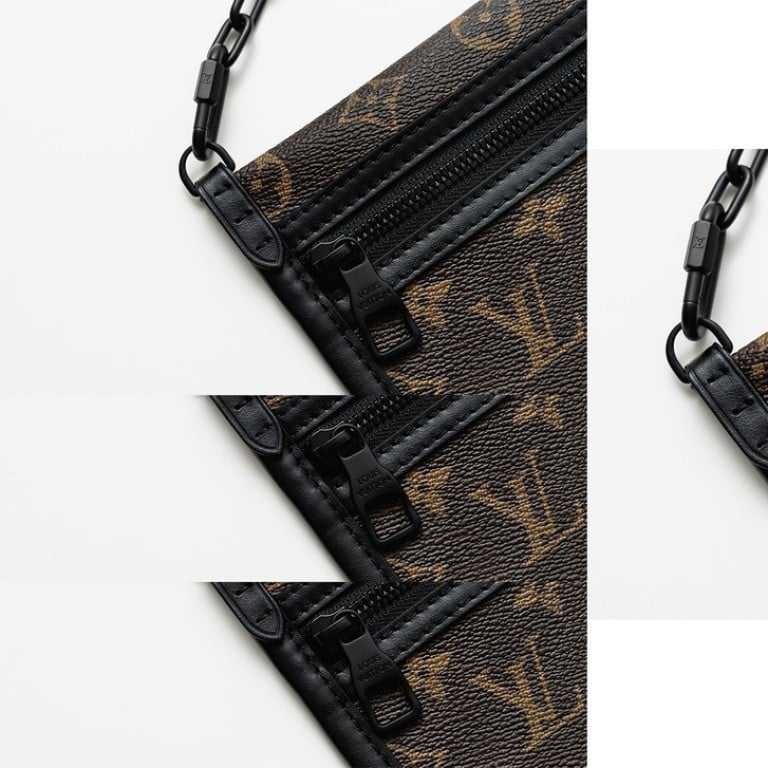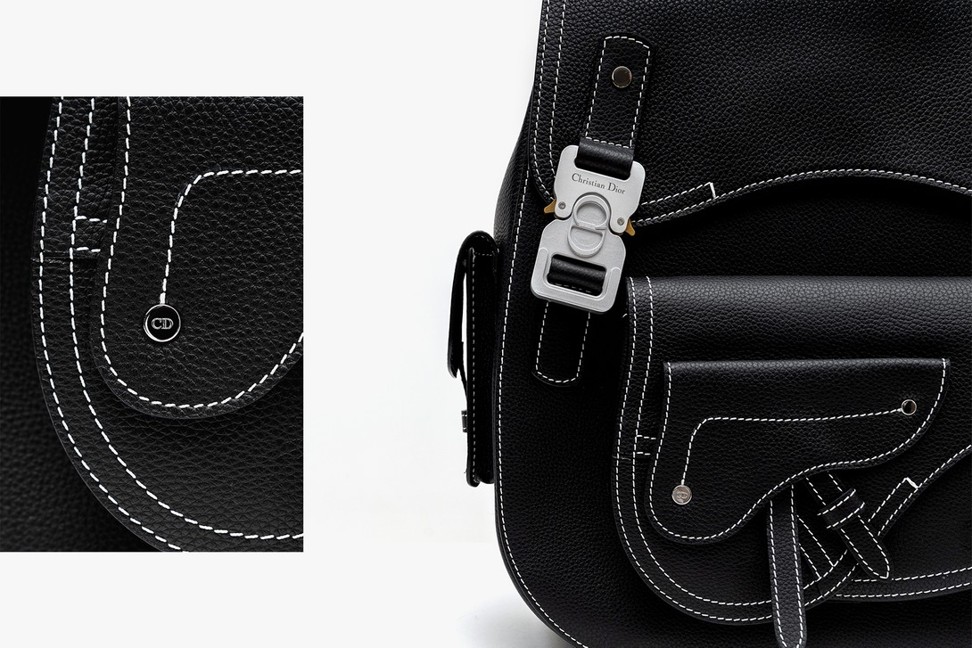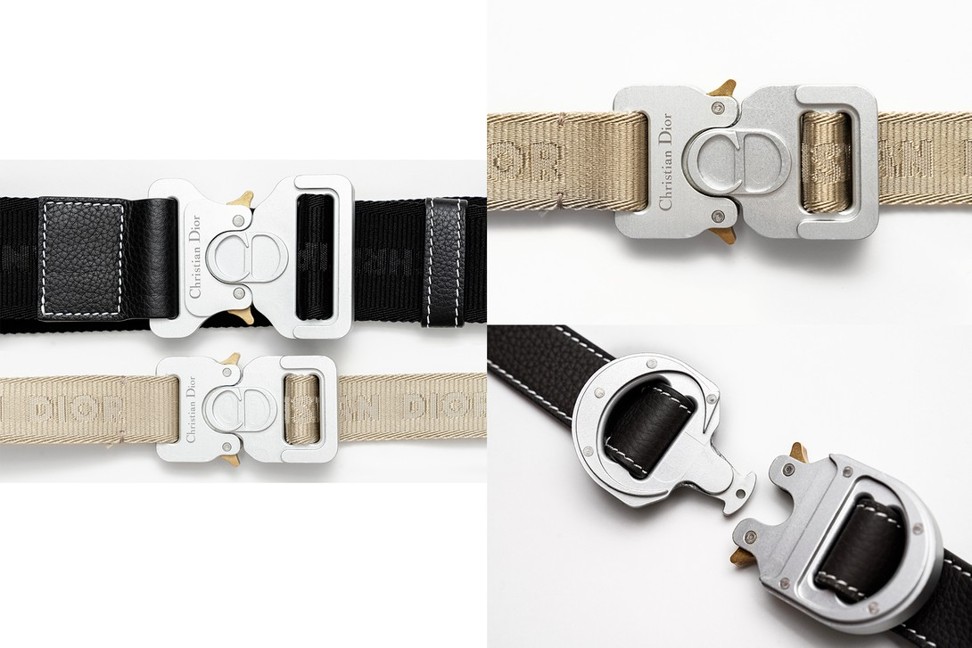Louis Vuitton and Off-White show how streetwear drives innovation in hardware

The right zip or button isn’t the sort of detail you would notice on a runway or in a street style snap. It is immediately obvious, however, when you touch and feel – and actually wear – a garment. Though not necessarily perceptible at first glance, the engineering and artistry that go into creating a single zip can make the high prices of designer clothing far more understandable. In recent years, those small details and closures have become a place for menswear brands to create innovative styles unique to their labels and to display their logos; in essence, hardware is crucial for these designers to establish their brands.
LV’s Abloh gives suit and tie a makeover at Off-White Paris show
That ranges from flashy pieces such as Louis Vuitton’s pin closures and chainlinks and 1017 ALYX 9SM’s signature buckle, to the small, nearly imperceptible branding details; take a close look at the cordends on an Off-White hoodie and you will see they read “Metal Tip” in tiny lettering on the bottom.
“With menswear, they experiment more. This is where the streetwear contamination is coming aboard,” says Nantas Montonati, group sales and marketing director for Swiss manufacturer Riri, which creates everything from zips and snap buttons to cordstoppers and eyelets at its production sites in Italy and Switzerland. Some of the company’s signature creations include the universal zip slider and the zero snap button. “What we try to do with our zips and our snaps, and everything is to have it look beautiful and be, really, a design element, as part of it rather than just a functioning piece,” said Ben Howell, CEO of Riri USA Inc. “Riri is the brand for the brands,” as Montonati puts it.

In the streetwear sphere, few have made hardware as crucial to their branding as Matthew Williams, whose 1017 ALYX 9SM label has made technical gear-influenced details into a luxury good. His roller coaster buckle has become the brand’s signature piece, appearing on everything from belts and bags to jewellery – even a poncho. Though inspired by equipment at a Six Flags theme park, the buckle makes reference to rock climbing gear, with a kiloNewton rating written on the exterior (its classic belt boasts a 24kN and 12kN rating, while the aforementioned poncho includes a 10kN and 5kN rating). Whether the €300 (US$334.70) belts are suitable for rappelling up a mountain is unclear.
Prada and Heliot Emil have followed Williams’ lead in that regard. For his first Dior men’s show, Kim Jones went a step further and commissioned Williams to translate his signature roller coaster buckle for the French label. The new version loses the kiloNewton rating for all manner of Dior branding – not only in the form of the house’s logo, but with the CD initials transformed into the buckle’s shape. Similar to Williams, Jones has not shied away from adding the buckle to every accessory he can. Along with the new bee motif created by KAWS and the modernisation of the house’s Oblique logo, it has become a staple of Jones’ rebranding of Dior for men.
Streetwear labels Clot, Ambush, Alyx take over Paris Men’s Fashion Week
Hardware as a form of branding isn’t attractive for all streetwear designers, however. “There’s a lot more hardware in general recently,” ACRONYM designer Errolson Hugh tells Hypebeast. “But this is more about a look than anything else; it’s hardware as an ornament or as an aesthetic for the most part, so it’s not really interesting for us.”
Innovative uses of hardware certainly isn’t new for ACRONYM, which Hugh founded with Michaela Sachenbacher in 1994. However the small brand’s profile has risen considerably since Hugh was tapped to revive Nike’s ACG line, moving techwear as a whole from an underground subculture to a popular, Instagrammable style.
Hugh nonetheless remains focused on function over style, sourcing from whatever supplier can provide the quality and consistency he needs. “Material determines possibility. For example, the snap we use on our Gravity Pockets was originally engineered to last for ‘three generations.’ With this type of fatigue curve we felt confident that it could perform the way we need it to,” he says. Watching the label’s pieces in action, it’s easy to see why a high-functioning zip or snap is so essential to making them work.

It’s for that reason that Hugh doesn’t commission any custom closures. “We’re not really fans of super brand new things in general, actually,” he explains. “We’re much more about the tested and true, even if we use them in unorthodox ways.” That attention to small details delights devoted followers, such as the discovery that the ACRONYM x Nike Air Presto Mid includes a locking zip. “I don’t know if they are secrets, but there have always been non-obvious uses and functions built into ACRONYM garments,” Hugh says.
What Jimmy Choo’s Sandra Choi really thinks about the collaboration with streetwear label Off-White
YKK’s products are found on everything from Levi’s to Yohji Yamamoto (though it too is quiet about confirming its client list), but its status as the number one zip producer in the world means it is associated with the mass market more than with bespoke production. In December 2015, the Japanese company opened its first ever showroom in London’s Shoreditch district, which Stefaniak says was a “revolution” for the company in allowing individual designers to interact with YKK.
“Before you had to be a big brand to place an order with us,” she says. Now freelance designers or fashion students can make an appointment and purchase small orders of YKK products. And considering it is facing increasing competition from Chinese producer SBS for the mass-market consumer, YKK is smart to showcase its more design-minded capabilities with the showroom. “It’s our dream to have this kind of showroom in every city,” Stefaniak says.

Developing relationships with designers early on is also important for Riri. Though its products are likely to be out of most fashion students’ budgets (if you have to ask how much their zips cost, you’re in the wrong place), the company forges connections by visiting schools like FIT to give students sample products. “We sponsor a lot of people,” Howell explains. “We need to help the industry and we need to help the young people starting out. It’s in their interest and also in our best interest.” After all, the race for new styles never ends.
The manufacturer sees lacquered plastic as one of the trends in hardware that still poses the biggest technical challenges. As Montonati explains, lacquering plastic components in different colours cannot only create a bottleneck in production, the final product is also far more prone to chipping than the galvanic metal finishes more traditionally used in luxury products. “Durability of the lacquering, this is something we are working on a lot because it’s definitely a trend, and we have to make it much, much better,” he says. As menswear designers continue to send eye-popping colours and monochromatic looks down the runway, Riri is looking to car manufacturers to learn how to make more durable coloured finishes.
Chinese hip hop show with 200m viewers fuels millennial streetwear trend
Sustainability is also changing the industry; with more luxury brands going green, their partners and manufacturers need to as well. “They need to know what our carbon footprint is so they can put it into their calculations because they’re buying things from us,” Howell explains, and adds that Riri has appointed a sustainability manager to look at everything from air filters in their offices to dyeing processes in their factories. There’s also a trickle-down effect with designers using more sustainable products as a whole; according to Montonati, “green” leather can have extreme effects like oxidation on metal hardware, which means more research, more testing and more development to make products fit with the new materials.

But durability – a zip or button that will still work after being used thousands of times – remains crucial to creating sustainable hardware. “The quality of product is our first step in sustainability,” Stefaniak says of YKK’s efforts in the arena, which she says have been part of its ethos since its founding in 1994. The Japanese company is also looking to accessibility as a new frontier for closures, with zips that can be opened with one or no hands in production.
Why Dior, Chanel look to Douyin, China’s hot video app, to boost profiles
While many of these details remain imperceptible for anyone but the wearer, the countless social media accounts dedicated to documenting fashion mean young consumers are more discerning than ever. “Millennials are going to Instagram. They see everything. There are some sites that, let’s say, make it evident, the difference. That’s good for us,” says Montonati.
Want more stories like this? Sign up here. Follow STYLE on Facebook, Instagram and Twitter

High functioning and innovative zips, snap buttons, cordstoppers and eyelets are crucial for designers to establish their brands